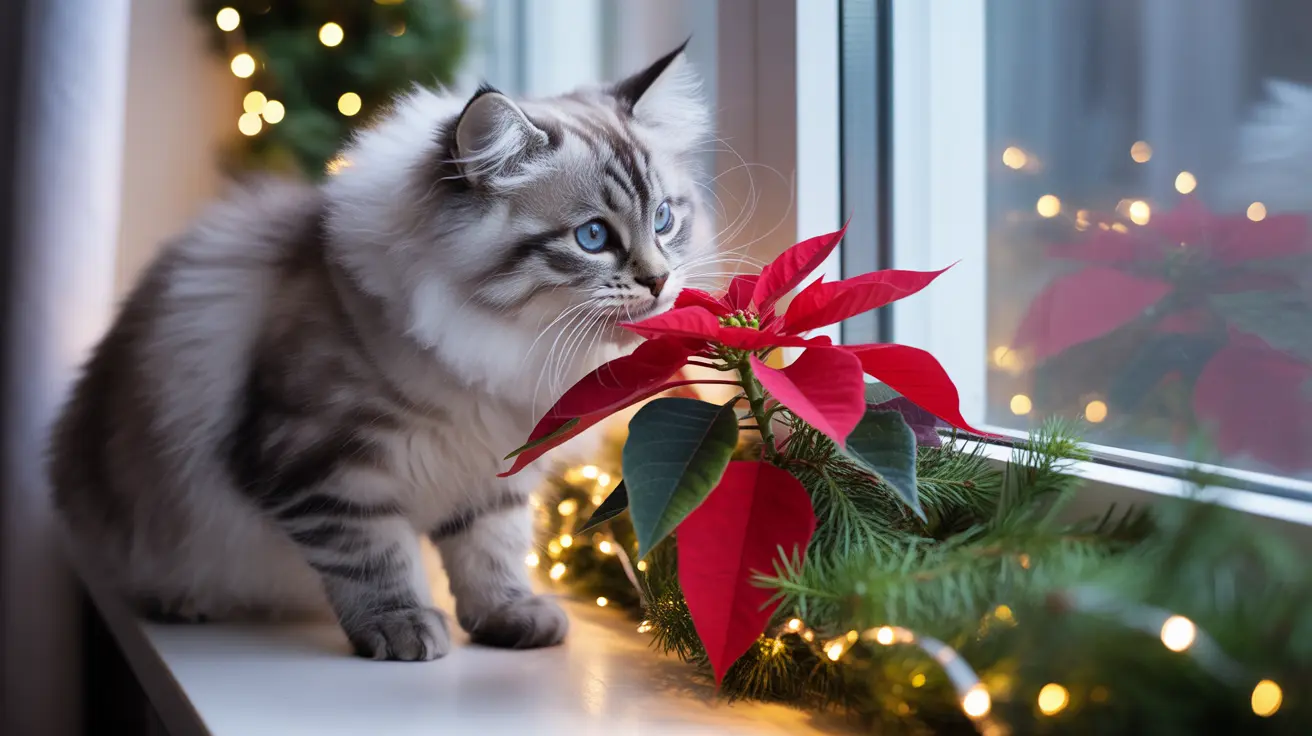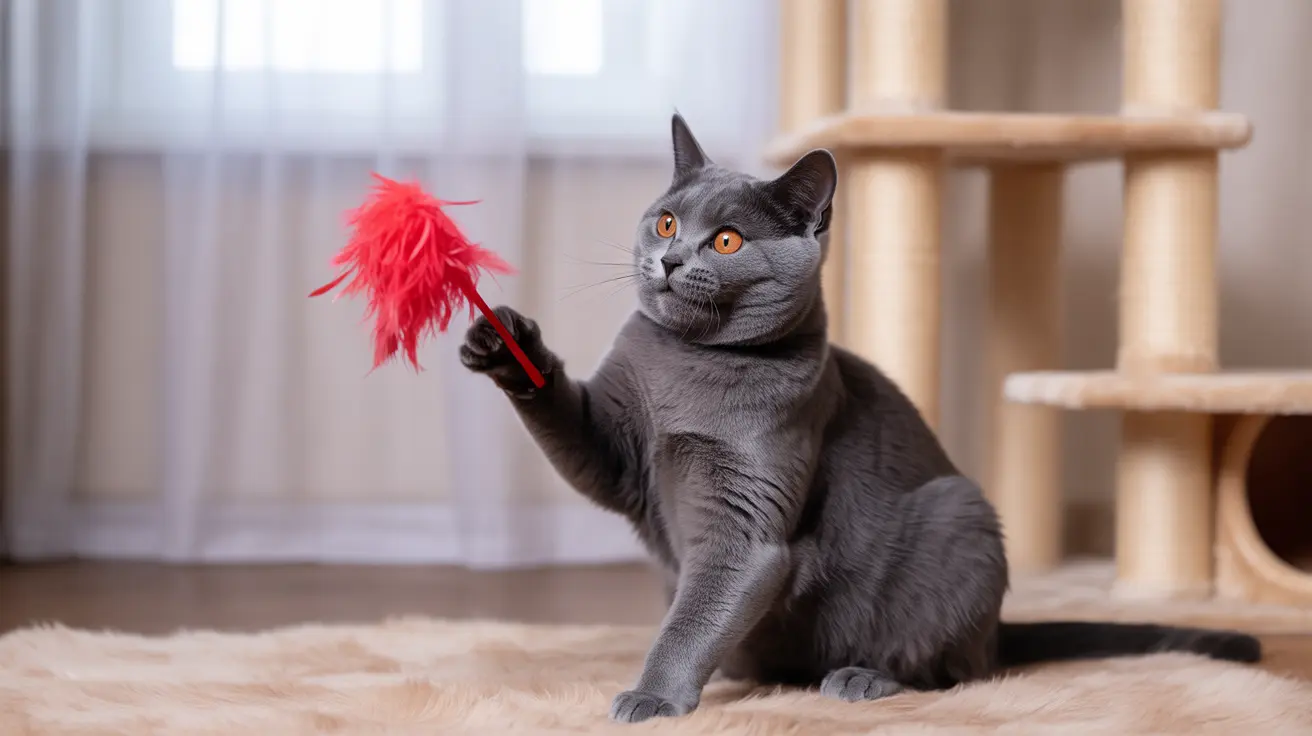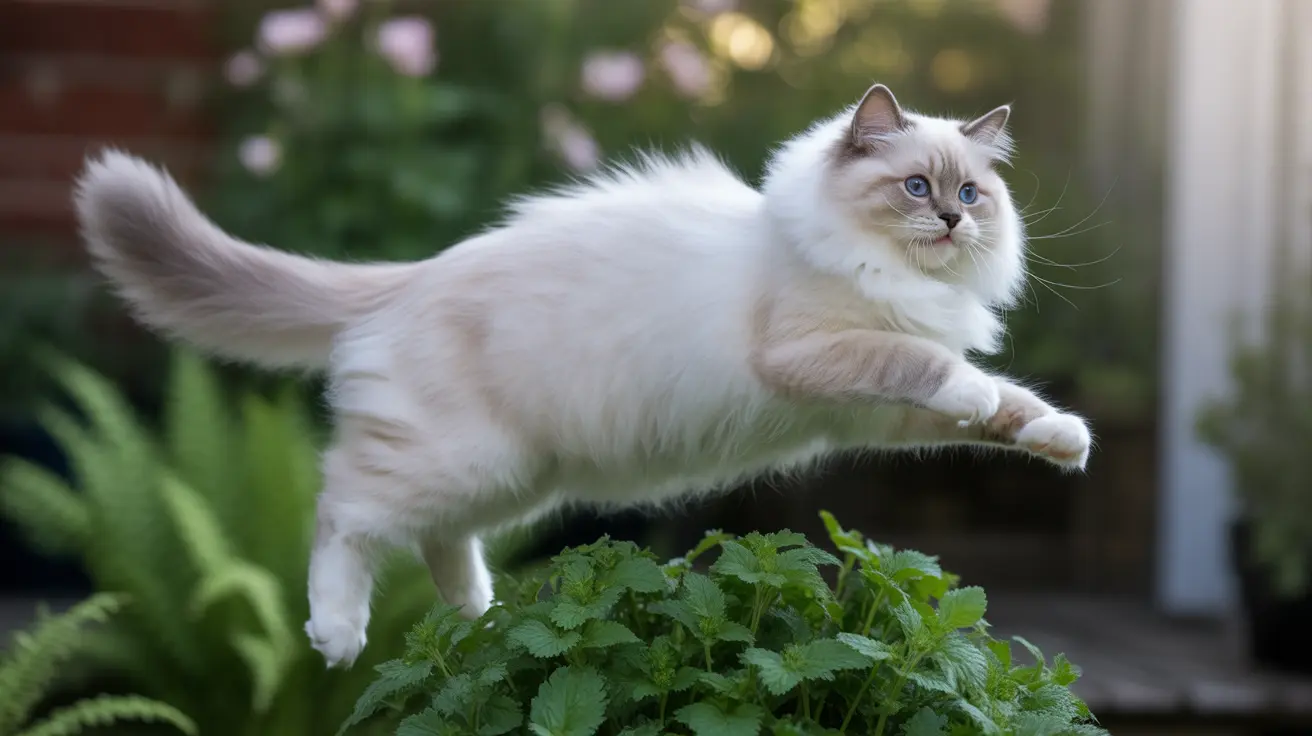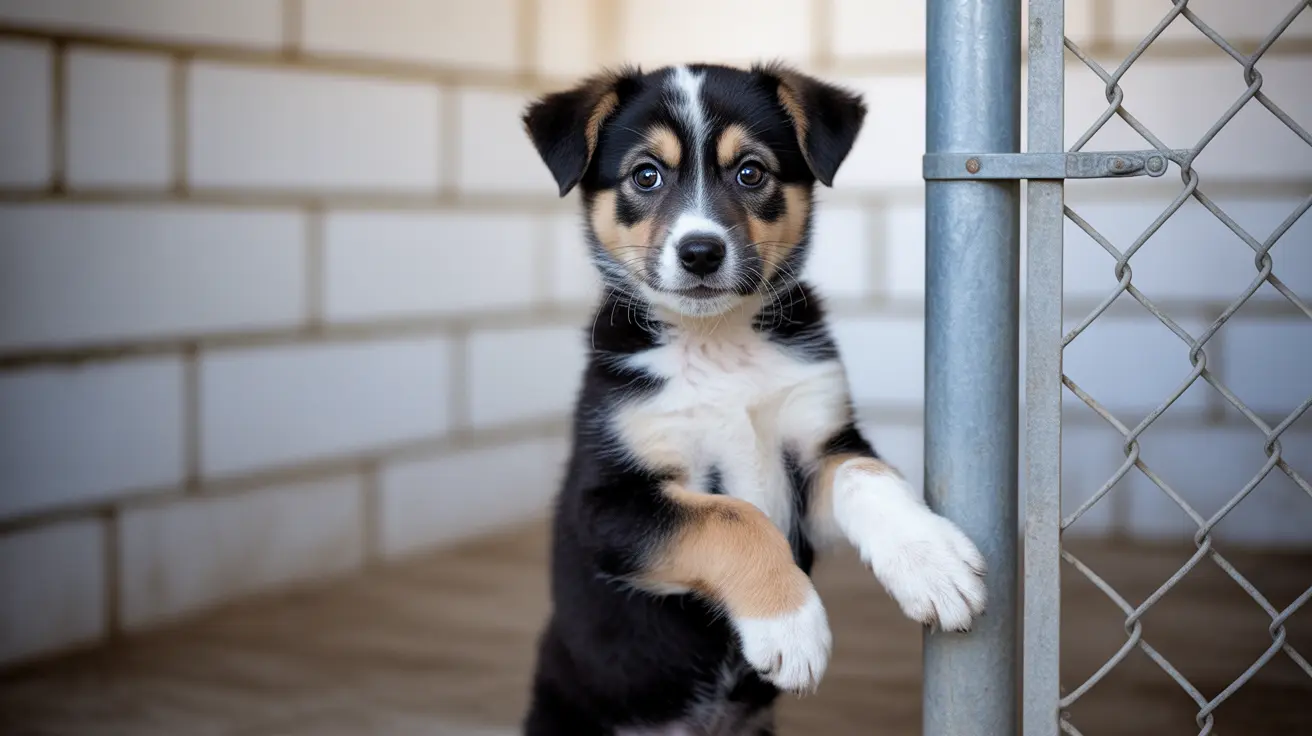Poinsettia Poisoning in Pets: Essential Holiday Safety Guide for Pet Owners
As the holiday season approaches, many pet owners find themselves decorating their homes with festive plants, particularly the vibrant poinsettia. While these beautiful red and green plants have become synonymous with Christmas celebrations, concerned pet parents often wonder about their safety around beloved cats and dogs. Understanding the risks of poinsettia poisoning in pets is crucial for maintaining a safe, festive environment that both families and their furry companions can enjoy.
Although poinsettias have developed a reputation for being highly toxic to pets, recent research and veterinary sources reveal that the actual risk is much lower than commonly believed. However, this doesn't mean pet owners should ignore potential dangers entirely. By learning about the symptoms, proper response protocols, and prevention strategies, you can ensure your holiday celebrations remain joyful and safe for every member of your household, including your four-legged family members.
Understanding Poinsettia Toxicity in Pets
Poinsettias contain a milky white sap that includes chemicals called diterpenoid euphorbol esters and saponin-like detergents. These compounds are responsible for the mild toxic effects that can occur when pets come into contact with or ingest parts of the plant. Contrary to popular belief, research and veterinary sources report that poinsettias have very low toxicity to animals, making them far less dangerous than their reputation suggests.
When pets chew, nibble, or lick poinsettia leaves, stems, or flowers, the toxic compounds can cause irritation to their mouth, throat, and digestive system. The severity of symptoms typically depends on the amount of plant material consumed and the individual pet's sensitivity to the compounds. Most cases of poinsettia exposure result in mild, self-limiting symptoms that resolve without medical intervention.
Recognizing Symptoms of Poinsettia Poisoning
Common Signs in Dogs and Cats
Pet owners should be aware of the various symptoms that may indicate their cat or dog has been exposed to poinsettia. The most frequently observed signs of poinsettia poisoning in pets include:
- Excessive drooling or salivation
- Vomiting
- Diarrhea
- Skin irritation, including redness and swelling
- Itchiness at contact sites
- Mild eye irritation if sap contacts the eyes
These symptoms are usually mild and self-limiting, meaning they typically resolve on their own without requiring extensive medical treatment. However, if a pet consumes large quantities of plant material, more pronounced symptoms may develop, warranting closer monitoring and potential veterinary intervention.
When Symptoms Become Concerning
While most poinsettia exposures result in minor discomfort, pet owners should remain vigilant for signs that indicate more serious complications. Severe or persistent symptoms that last longer than 24 hours, difficulty breathing, excessive lethargy, or signs of severe dehydration from prolonged vomiting or diarrhea should prompt immediate veterinary consultation.
What to Do If Your Pet Ingests Poinsettia
Immediate Response Steps
If you suspect your pet has ingested poinsettia or come into contact with the plant's sap, taking prompt and appropriate action can help minimize discomfort and prevent complications. First, remain calm and assess the situation to determine the extent of exposure.
Remove any remaining plant material from your pet's mouth if safely possible, and rinse their mouth gently with clean water. If the sap has contacted their skin or eyes, flush the affected areas thoroughly with lukewarm water for several minutes to remove any irritating residue.
Veterinary Consultation
Even though poinsettia toxicity is generally mild, veterinary consultation is advisable whenever plant ingestion is suspected. Your veterinarian can assess your pet's condition and provide appropriate guidance based on the specific circumstances of the exposure.
Treatment for poinsettia poisoning is typically symptomatic and may include measures to soothe irritated skin or manage gastrointestinal upset. In most cases, supportive care and monitoring are sufficient, but professional veterinary assessment ensures that any complications are identified and addressed promptly.
Holiday Plants That Pose Greater Risks
More Dangerous Alternatives
While poinsettias present relatively low risk, other popular holiday plants pose significantly greater dangers to pets. Mistletoe is considerably more toxic than poinsettias and can cause vomiting, severe diarrhea, breathing difficulty, shock, and even death in pets. Holly berries and leaves can induce vomiting, abdominal pain, and diarrhea, though symptoms are usually mild.
Lilies represent one of the most serious threats to cats during the holiday season. All parts of lily plants are highly toxic to cats and can cause kidney failure, making them extremely dangerous decorative choices for households with feline companions.
Creating a Pet-Safe Holiday Environment
Strategic Plant Placement
The most effective way to prevent poinsettia poisoning in pets is to keep these plants completely out of reach of curious cats and dogs. Place poinsettias on high shelves, mantels, or in rooms that pets cannot access. Consider the climbing abilities of cats and the jumping reach of dogs when selecting placement locations.
Creating physical barriers around holiday plants can also help protect pets while maintaining festive decorations. Decorative plant stands, glass covers, or strategic furniture placement can serve as effective deterrents.
Alternative Decoration Options
For pet owners who prefer to eliminate any risk entirely, artificial plants provide an excellent alternative to live poinsettias. High-quality silk or plastic poinsettias can deliver the same visual impact without any toxicity concerns. Additionally, consider focusing holiday decorating efforts on non-plant elements such as lights, ornaments, and garlands placed safely out of pet reach.
Prevention Strategies for Holiday Safety
Comprehensive Pet-Proofing
Beyond managing poinsettia placement, creating a truly pet-safe holiday environment requires attention to various potential hazards. Secure all electrical cords from holiday lights, ensure ornaments are placed high enough to prevent ingestion, and avoid using tinsel or other small decorative items that could pose choking or intestinal blockage risks.
Establish clear boundaries for pets during holiday gatherings, and inform guests about the importance of not sharing holiday foods with pets or leaving potentially dangerous items within reach.
Education and Awareness
Share information about holiday plant safety with family members and guests to ensure everyone understands the importance of keeping plants away from pets. Consider posting gentle reminders near holiday displays to reinforce safe practices throughout the holiday season.
Frequently Asked Questions
Are poinsettias deadly to cats and dogs?
No, poinsettias are not typically deadly to cats and dogs. Research shows they have very low toxicity and usually cause only mild, self-limiting symptoms such as drooling, vomiting, or skin irritation. While ingestion should still be avoided, poinsettias are far less dangerous than commonly believed.
What should I do if my cat ate poinsettia leaves?
If your cat has eaten poinsettia leaves, remove any remaining plant material from their mouth, rinse with clean water, and monitor for symptoms like vomiting, drooling, or diarrhea. Contact your veterinarian for guidance, especially if symptoms are severe or persistent. Most cases resolve without treatment, but professional assessment is recommended.
How much poinsettia is toxic to dogs?
Poinsettias have low toxicity, so small amounts typically cause only mild symptoms. Large quantities of plant material may cause more pronounced symptoms, but there's no specific toxic dose established. Any ingestion should be taken seriously, and veterinary consultation is advisable regardless of the amount consumed.
What holiday plants are more dangerous than poinsettias?
Mistletoe, holly, and lilies are significantly more dangerous than poinsettias. Mistletoe can cause severe symptoms including breathing difficulty and shock. Holly can cause vomiting and abdominal pain. Lilies are extremely toxic to cats and can cause kidney failure, making them the most dangerous holiday plant for feline companions.
Can poinsettia sap cause skin irritation in pets?
Yes, the milky white sap from poinsettias contains irritating compounds that can cause skin redness, swelling, and itchiness in pets. If your pet's skin contacts the sap, flush the area thoroughly with lukewarm water for several minutes to remove the irritating substances and prevent further discomfort.
Are artificial poinsettias a safe alternative for pet owners?
Yes, artificial poinsettias are an excellent safe alternative for pet owners who want to maintain holiday decorations without any toxicity risk. High-quality silk or plastic poinsettias provide the same visual appeal as live plants while eliminating any possibility of poisoning from ingestion or skin contact with plant materials.
When should I seek emergency veterinary care for poinsettia poisoning?
Seek immediate veterinary care if your pet shows severe symptoms such as difficulty breathing, excessive lethargy, persistent vomiting or diarrhea lasting more than 24 hours, signs of severe dehydration, or any symptoms that appear to be worsening rather than improving. While most poinsettia exposures are mild, severe cases require professional treatment.
Conclusion
Understanding the reality of poinsettia poisoning in pets allows holiday enthusiasts to make informed decisions about festive decorating while keeping their beloved companions safe. While poinsettias do contain mildly toxic compounds that can cause discomfort in cats and dogs, they are far less dangerous than their reputation suggests. The key to safe holiday celebrating lies in prevention through strategic placement, awareness of symptoms, and knowing when to seek veterinary guidance.
By implementing simple safety measures and considering pet-friendly alternatives, families can enjoy beautiful holiday decorations without compromising their pets' wellbeing. Remember that other holiday plants like mistletoe, holly, and lilies pose much greater risks, making informed plant choices crucial for pet safety. With proper precautions and knowledge, both pets and their families can enjoy a safe, festive holiday season together.






